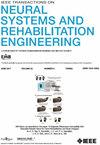基于群体的神经发育障碍诊断的拓扑引导图掩码自编码器学习
IF 4.8
2区 医学
Q2 ENGINEERING, BIOMEDICAL
IEEE Transactions on Neural Systems and Rehabilitation Engineering
Pub Date : 2025-04-21
DOI:10.1109/TNSRE.2025.3562662
引用次数: 0
摘要
探索人群脑疾病的发病机制是神经科学领域的重要研究内容。现有的方法要么结合临床信息辅助分析,要么利用数据扩增进行样本扩展,忽视了对个体信息的挖掘和对群体个体间关联的探索。为了解决这些问题,本工作提出了一种新的检测与脑部疾病相关的异常神经回路的方法,即拓扑引导图掩码自编码器学习方法(TGML),该方法注重个体表征和群体内关联,以实现对群体内脑部疾病的有效诊断。具体而言,TGML包括:1)拓扑引导的群体关联模块(T ${G}^{{2}}$ AM),用于重建边缘并更新初始种群图;2)种群内交互掩码自编码器网络(IPI_MAE)捕捉基于新型掩码自编码器的受试者的区别特征,该网络将传统的掩码自编码器整合到任务相关过程中。在自闭症谱系障碍(ASD)和注意缺陷多动障碍(ADHD)两个神经发育障碍诊断任务中对该方法进行了评估。结果表明,所提出的TGML实现了显著的改进,并超越了目前最先进的方法。本文章由计算机程序翻译,如有差异,请以英文原文为准。
Topology-Guided Graph Masked Autoencoder Learning for Population-Based Neurodevelopmental Disorder Diagnosis
Exploring the pathogenic mechanisms of brain disorders within population is an important research in the field of neuroscience. Existing methods either combine clinical information to assist analysis or use data augmentation for sample expansion, ignoring the mining of individual information and the exploration of inter-individual associations in population. To solve these problems, this work proposes a novel approach for detecting abnormal neural circuits associated with brain diseases, named Topology-guided Graph Masked autoencoder Learning method (TGML), which focuses on individual representation and intra-population association, to achieve the effective diagnosis of brain diseases within the population. Concretely, the TGML comprises 1) the topology-guided group association module (T ${G}^{{2}}$ AM) that reconstructs the edges and update the initial population graph, 2) the intra-population interaction masked autoencoder network (IPI_MAE) captures the discriminative characteristics of subjects based on the novel Masked Autoencoder, which incorporates traditional masked autoencoders into a task-related process. The proposed method is evaluated on two neurodevelopmental disorder diagnosis tasks of Autism Spectrum Disorder (ASD) and Attention Deficit Hyperactivity Disorder (ADHD). The results show that the proposed TGML achieves significant improvements and surpasses the state-of-the-art methods.
求助全文
通过发布文献求助,成功后即可免费获取论文全文。
去求助
来源期刊
CiteScore
8.60
自引率
8.20%
发文量
479
审稿时长
6-12 weeks
期刊介绍:
Rehabilitative and neural aspects of biomedical engineering, including functional electrical stimulation, acoustic dynamics, human performance measurement and analysis, nerve stimulation, electromyography, motor control and stimulation; and hardware and software applications for rehabilitation engineering and assistive devices.

 求助内容:
求助内容: 应助结果提醒方式:
应助结果提醒方式:


